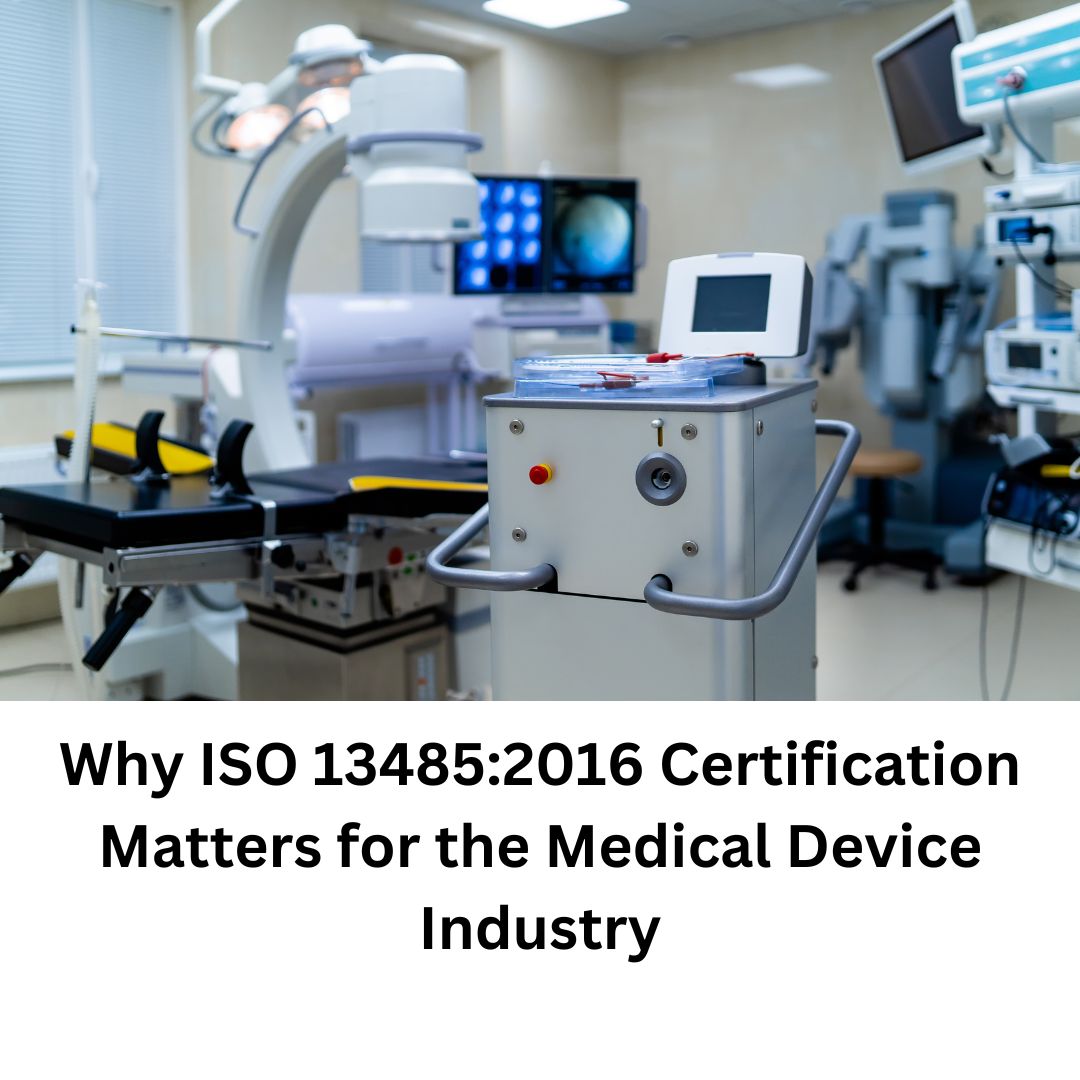Blog Details

Why ISO 13485:2016 Certification Matters for the Medical Device Industry
In today’s fast-evolving healthcare sector, medical devices play a critical role in saving lives, diagnosing illnesses, and improving the quality of patient care. From simple surgical instruments to advanced imaging systems and life-support equipment, the reliability of these devices is a matter of public health and safety. To ensure that medical devices consistently meet quality, safety, and regulatory requirements, the ISO 13485:2016 certification has become the global benchmark.
This internationally recognized standard provides a comprehensive framework for establishing and maintaining a Quality Management System (QMS) specific to medical device manufacturers and related organizations. But why does it matter so much for the industry? Let’s explore in depth.
Understanding ISO 13485:2016
ISO 13485:2016 is an international standard developed by the International Organization for Standardization (ISO). It specifies requirements for a QMS where an organization needs to demonstrate its ability to provide medical devices and related services that consistently meet customer and regulatory requirements.
Although based on the widely adopted ISO 9001 standard, ISO 13485 is more specialized. It emphasizes:
- ✔️ Risk management across the product life cycle
- ✔️ Documentation and traceability requirements
- ✔️ Compliance with regulatory frameworks (FDA, CE Marking, etc.)
- ✔️ Sterilization, validation, and cleanliness standards
- ✔️ Customer satisfaction and continual improvement
The 2016 revision made the standard more aligned with global regulatory requirements, increasing its relevance in today’s interconnected healthcare market.
Why ISO 13485:2016 Certification Matters
- Ensures Patient Safety and Product Quality
At the core of ISO 13485:2016 is the commitment to patient safety. Certification ensures strict quality controls at every production stage—from design to post-market services. This results in:
- ✔️ Fewer defects and recalls
- ✔️ Consistency in product performance
- ✔️ Increased confidence among healthcare providers and patients
- Global Regulatory Compliance
ISO 13485:2016 aligns closely with global regulations like the FDA’s 21 CFR Part 820 and the EU MDR. In many regions, it’s mandatory or a de facto requirement for market access.
- Access to Global Markets
Certification enables faster product approvals, builds credibility, and enhances competitiveness globally.
- ✔️ Accelerates international approvals
- ✔️ Strengthens global partnerships
- ✔️ Boosts performance in tenders and contracts
- Improved Risk Management
The standard requires risk identification and mitigation across the product life cycle, ensuring:
- ✔️ Early detection of hazards
- ✔️ Proactive preventive actions
- ✔️ Reduced failures and liabilities
- Enhanced Operational Efficiency
ISO 13485:2016 promotes process optimization through well-documented procedures and monitoring systems, leading to:
- ✔️ Smoother operations
- ✔️ Faster time-to-market
- ✔️ Cost savings
- Strengthened Supplier and Partner Relationships
With ISO 13485:2016, organizations demonstrate their ability to manage supply chain quality, making collaboration easier and more reliable.
- Building Trust with Stakeholders
Certification offers global proof of your commitment to safety and performance—building trust among:
- ✔️ Healthcare professionals
- ✔️ Regulators
- ✔️ Patients and investors
- Facilitates Continuous Improvement
Regular audits and CAPAs keep organizations improving. Benefits include:
- ✔️ Innovation readiness
- ✔️ Responsiveness to regulation
- ✔️ Long-term sustainability
The Business Advantages of ISO 13485:2016 Certification
- Market Differentiation: Stand out in a competitive landscape.
- Customer Confidence: Trusted by healthcare providers and regulators alike.
- Risk Reduction: Lower chances of recalls and legal issues.
- Operational Savings: Efficient processes reduce production costs.
- Reputation Enhancement: Demonstrates a serious commitment to quality and safety.
Challenges in Implementing ISO 13485:2016
While the benefits are compelling, implementation has its hurdles:
- 🔍 Interpreting complex QMS requirements
- 📚 Training cross-functional teams
- 🗂️ Managing documentation and traceability
- ⚠️ Embedding risk management organization-wide
- ✅ Preparing for audits and inspections
These can be managed with proper planning, expert guidance, and a phased approach. Many organizations seek help from ISO consultants or certification bodies.
Conclusion
In the medical device industry, quality and safety are non-negotiable. ISO 13485:2016 certification ensures that devices meet global standards and protect patients. It’s a strategic tool for achieving compliance, building trust, and gaining competitive advantage in international markets.
For manufacturers, suppliers, and service providers in healthcare, achieving ISO 13485:2016 certification is a powerful step toward demonstrating excellence, fulfilling regulatory obligations, and safeguarding human lives.
In short: ISO 13485:2016 bridges the gap between innovation, compliance, and patient safety—making it the backbone of the medical device industry worldwide.
Leave a Comment
We would love to hear your thoughts! Please leave your comment below:
